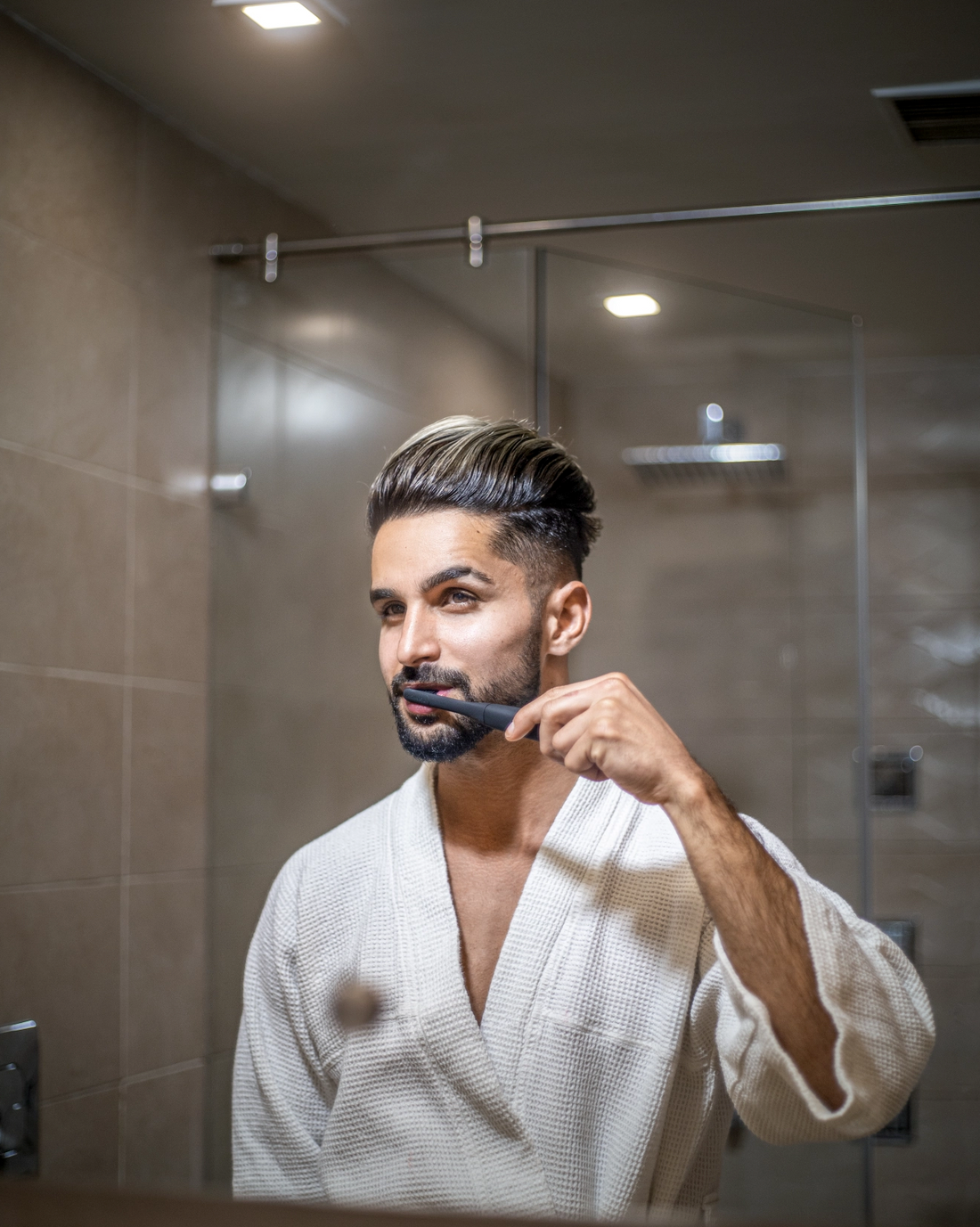
What Is the Right Brushing Technique?
Share
As we all know, proper dental hygiene is of utmost importance. Regardless of age, where you live, what you do for a living, social class. People should maintain their dental hygiene even if they do not have any critical issues relating to their teeth, gums, or mouth overall.
Disregarding our dental hygiene could lead to a myriad of problems that, although not serious at first, could turn into significant issues and impediments.
So, with all of this in mind, we can confidently say that taking care of your teeth is immensely important. In regards to this, one of the most frequently asked questions is the following: How to brush your teeth correctly?
There have been numerous researches about the technique people should use, and many papers have been written to find the most suitable way.
So, many people wonder whether there is a universally accepted technique for properly brushing your teeth and which one is it?
The most recommended way by dentists and specialists to properly brush your teeth will be listed here and explained, along with some tips for better tooth brushing. But first, let’s talk about the following.
THE PROPER TECHNIQUE FOR BRUSHING YOUR TEETH

There a few steps you will need to follow to brush your teeth properly. More specifically, these are the five most recommended steps you need to take that will lead you in the right direction.
Start With the Outside
– When brushing your teeth, you need to start with the outer surfaces of your teeth. You should not hurry, and you should focus on gently brushing your upper teeth first and then your lower teeth. Being gentle is extremely important, and if you are not accustomed to gently brushing your teeth, the PomaBrush can come in handy here, as it has a built-in feature that brushes your teeth slowly and gently.
A 45˚ Angle Is a Must
– The following requirement is to hold your toothbrush at a 45˚ angle. It would be best to brush against the gum line so that you do not miss any trapped plaque or food scrap. The brush should move gently back and forth. It would help if you used short strokes. For instance, the PomaBrush is designed to have these types of movements suitable for this step.
Continue With the Inside
– After completing the first two steps, the next step would be to brush the inner surface of your teeth. In practice, people tend to skip the inner surfaces of their teeth because others can not see them. However, they are just as susceptible to plaque as the outer surfaces, and you should pay attention to them. You should apply the 45˚ angle here and brush back and forth to clean the inner surfaces.
How to Clean Chewing Surfaces?
– The fourth step is to clean the chewing surfaces of your teeth. Brush the tops of your back teeth with quick back and forth strokes to avoid skipping over any trapping food.
Don’t Forget the Tongue
– The fifth and last step is to brush your tongue. This step is the one that is most often omitted from the daily routine of tooth brushing, and many people do not even consider it necessary. Many people are often confused that they are even supposed to do this. But, this step is a must because brushing your tongue removes bacteria that causes odor, and subsequently, bad breath.
TIPS FOR IMPROVED TOOTH BRUSHING
Now, we proceed with the tips.
Brush Twice a Day
– First and foremost, you should brush your teeth twice a day, once in the morning and once before going to sleep. The duration of the brushing should be two minutes each time. If you use a regular or manual brush, you should set a timer to know exactly when to stop. But, if you use an electric toothbrush, like the PomaBrush, you do not need to do this as the PomaBrush has a built-in timer that vibrates when the two minutes have gone.
Use a Soft-Bristled Toothbrush
– A toothbrush that experts most recommend is a soft-bristled toothbrush that will not damage your teeth and gums. An example of this type of toothbrush is the PomaBrush, which has soft bristles and gently brushes your teeth. Additionally, it’s recommended that you use a toothbrush with a small brush head to reach all mouth areas. Again, experts recommend using an electric toothbrush, like the PomaBrush, as it helps people who struggle with limited manual movement.
Any Toothpaste Is the Right Toothpaste
– When it comes to which toothpaste is best, different toothpaste varieties are available depending on your specific needs. Whether you want to reduce cavities or make your teeth whiter, it is best to consult with your dentist or dental hygienist about the best option for you.
How to Deal With Overbrushing
– Most people are concerned about overbrushing their teeth. Overly aggressive brushing is a common issue that many people face and can certainly happen to anyone. To avoid this, you should make sure to use a gentle touch when brushing your teeth because overbrushing can lead to abrasion, gum recession, and increased gum sensitivity.
When Do I Change My Toothbrush?
– If you use a manual toothbrush, you should change it after three to four months or whenever the toothbrush shows signs of erosion. However, if you use an electric toothbrush, you do not have to worry about changing it so soon because they tend to last longer. For instance, the PomaBrush does not require changing before the first six months of usage.

CONCLUDING REMARKS
The five steps above are the ones everyone should implement in their daily routine. These steps should be applied in order, and they will help you achieve better dental hygiene without spending a large quantity of money.
This technique is convenient, effortless and practical, and can be implemented regardless of the person’s lifestyle.
